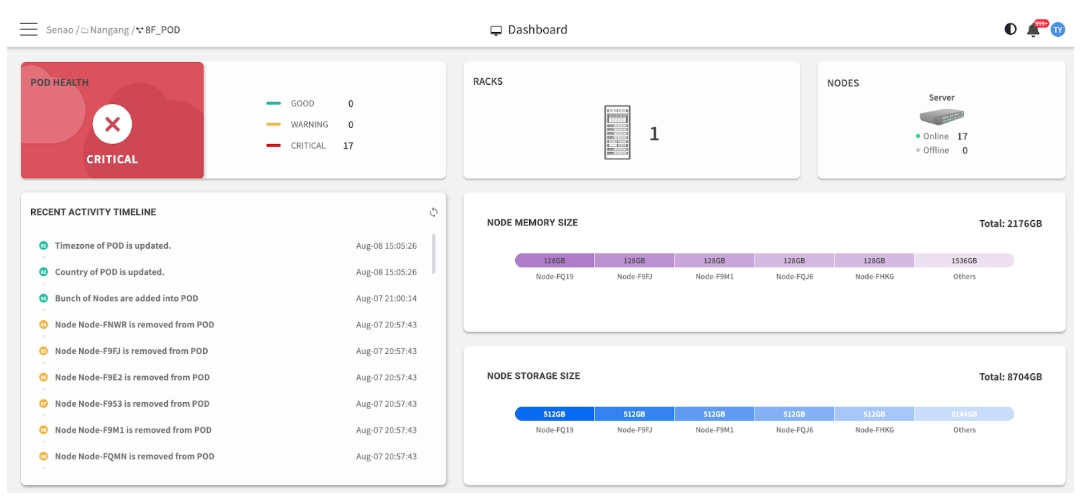Introduction to EnGenius Data Center Controller
Your comprehensive guide to EnGenius Data Center Controller (EDCC) and its powerful infrastructure management capabilities.
Overview: Your Centralized Command Center
Welcome to EnGenius Data Center Controller (EDCC), your centralized command center for managing EnGenius server infrastructure. This guide is your comprehensive resource for learning how to deploy, manage, and automate your nodes, from initial setup to daily operations. Whether you are managing a single rack or a large-scale data center, this manual will provide the step-by-step instructions and best practices you need to succeed.
What is EDCC?
The EnGenius Data Center Controller (EDCC) is a powerful on-premises management platform designed specifically for EnGenius EAS series servers. Packaged as a modern Docker container for rapid deployment, its core purpose is to provide secure, out-of-band management by utilizing industry-standard Redfish protocol to communicate directly with each server's Baseboard Management Controller (BMC). This means you can control your hardware regardless of the status of its primary operating system.
As an on-premises solution, you retain complete data sovereignty, making EDCC ideal for organizations with strict security and compliance requirements.
EDCC Deployment Advantages
Modern Container Architecture: EDCC is packaged as a Docker container, providing:
Rapid Deployment: Quick installation across different Linux environments
Consistent Operation: Identical runtime environment regardless of host system
Easy Updates: Simplified upgrade process through container image updates
Scalable Infrastructure: Supports up to 3,000+ EnGenius servers
Supported Hardware
Target Servers: EDCC is specifically designed for EnGenius ESA Server series with integrated BMC capabilities.
Hardware Requirement: Ensure your servers have functional BMC interfaces for full EDCC management capabilities.

The Core Concepts You Need to Know
💡 Foundation First: Understanding these two concepts is essential before proceeding with any EDCC operations.
The Three-Tier Management Hierarchy
EDCC organizes infrastructure using a specific hierarchy: Organization → Hierarchy View → POD.
Key Rule: Configuration can only be performed at the POD level, while monitoring can be done from any level.
Organization
✅
🚫
Cross-POD monitoring, highest management level
Hierarchy View
✅
🚫
Cross-POD monitoring container, aggregated view
POD
✅
✅
Complete management scope for individual POD
The Device Lifecycle Process
Discovery → Inventory → Assignment → ManagementA server (Node) must follow this specific lifecycle before becoming actively manageable:
Discovery: EDCC automatically discovers unmanaged nodes on the network
Inventory: Discovered nodes appear in the Organization-level Inventory (asset list only)
Assignment: Administrator manually assigns nodes to specific PODs
Management: Only then does the node become fully manageable
Critical Limitation: Devices in Organization Inventory are in "asset list" state and cannot be managed until assigned to a POD.
Who is This Manual For?
This manual is written for the IT Generalist. If you are an IT professional who manages networking, servers, and virtualization as part of a wide range of responsibilities, this guide is for you. We focus on practical, task-based instructions to help you get your job done efficiently, emphasizing the intuitive web interface over command-line configuration.
Key Features at a Glance
At-a-Glance Health Monitoring
Use the Dashboard to get real-time infrastructure overview, resource distribution, and recent activities
Hierarchical Infrastructure Management
Organize nodes using three-tier Organization → Hierarchy View → POD structure to match operational needs
Efficient Node Management
View, organize, group, and perform bulk operations on all nodes from the centralized Node List
Visual Topology Planning
Design and document physical rack layouts with the drag-and-drop POD View interface
Automated Maintenance
Schedule Firmware Provisioning and manage OS deployment to ensure consistency and security
Granular Access Control
Manage user accounts and delegate specific rights for entire Organization or individual PODs via Team Members
How to Use This Manual
This manual is structured to guide you progressively through the features of EDCC:
Part 1: Getting Started: Covers the foundational concepts and a quick-start guide.
Part 2: The MANAGE Module: Details all the features for daily monitoring and operational tasks.
Part 3: The CONFIGURE Module: Explains how to set up automated tasks and POD-wide policies.
Part 4: Administration: Covers user management and platform-level system settings.
Part 5: Appendices: Provides additional resources, including best practices and troubleshooting tips.
What's Next: Chapter 2 will provide detailed explanation of the installation and initial setup of EDCC